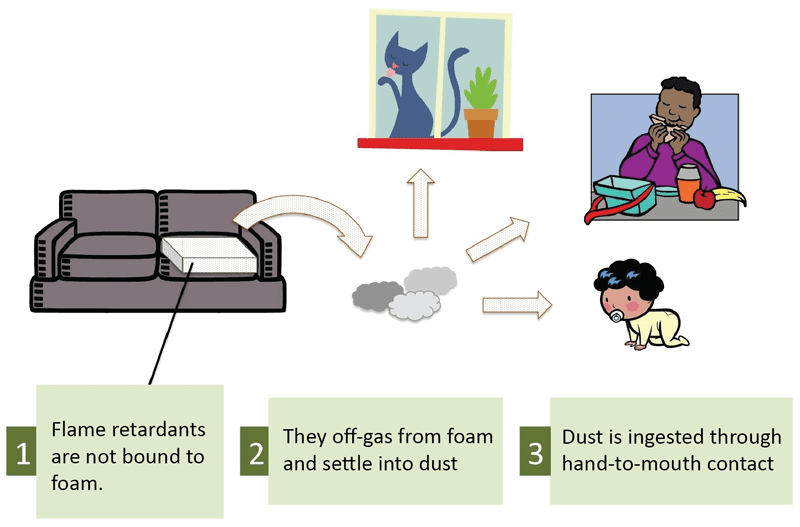Are Flame Retardants Banned? Toxic flame retardant chemicals were banned in the year 2006. Although these chemicals are no longer banned, they still affect people today, especially pregnant women, according to a study by the California-San Francisco University Program on Reproductive Health and the Environment.
For the study, a research team tested blood samples from 25 Northern and Central Californian pregnant women in their second trimester for polybrominated diphenyl ethers (PBDE). According to the results, it was found that the PBDE that was found had higher levels compared to the previous prenatal studies that were conducted in the U.S. and other countries such as Japan, India, Korea, China, Spain, and Sweden.
Where are flame retardants found?
Exposure to flame retardants isn’t only a threat to pregnant women. Anyone exposed to flame retardants can be affected as flame retardants are found in several things of everyday usage.

These chemicals are present in items such as furniture foam, children’s products, electronics, car seats, textiles, fabric blinds, coatings, paints, transportation interiors, and building insulation to meet flammability standards. However, these standards are poor predictions of actual fire-related hazards and lead to unnecessary use.
How are people exposed to flame retardants?
Flame retardants are additive rather than reactive. This means that they’re mixed with other materials in products and aren’t chemically bound. Flame retardants migrate out of products and can get into dust, water, and food, all of which people digested regularly.
We also have a chance of exposure to flame retardants by skin contact or breathing in these chemical vapors. Exposure by skin contact mainly happens when these flame retardants stick to our clothing and mobile phones.
Flame retardants have been detected in all those tested. Due to frequently putting their hands in their mouths, young children are known to have the highest level of exposure. As their bodies are developing, they’re particularly more vulnerable to the hazardous effects of these chemicals.
Why are flame retardants considered so dangerous?
- One of the biggest harmful effects of flame retardants on the environment is that they don’t break down in the environment. Because of this, people can still be exposed from exposure to foods and items even after years have passed since the chemical has been banned
- These harmful chemicals keep building up inside the bodies of people and animals
- Flame retardant chemicals can travel long distances at the Earth’s poles and even in the deepest oceans
- These chemicals have several negative effects on health such as impaired reproductive and neurological development, and exposed people have an increased risk of terminal conditions such as cancer.
Should you use flame retardants?
Flame retardants are protective clothing capable of keeping you safe from burning and fires, but it has been noticed that flame retardants keep fires at bay for a short time and make flames more dangerous because of increased smoke and toxic gases. Due to the presence of organohalogen flame retardants, fires can produce halogenated dioxins and furans. These increase the risk of cancers in firefighters.
There are much safer options to prevent fire hazards and dangers than using flame retardants such as photoelectric smoke detectors, fire safety education, self-extinguishing cigarettes etc. However, there are times when fire retardants are necessary, so manufacturers should ensure safer alternatives when making them.
